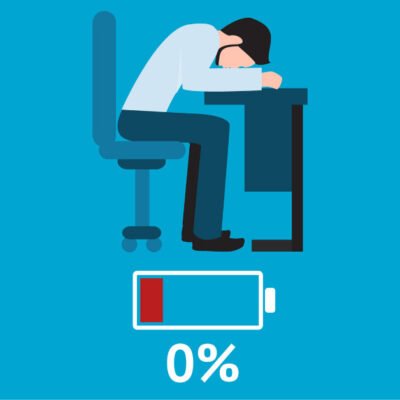In recent years, fitness apps and wearables have taken America by storm. Whether it’s a smartwatch tracking your daily steps or a mobile app helping you burn calories, millions of Americans now rely on these digital tools to stay healthy and motivated. The blend of technology, convenience, and health awareness has created a booming industry that’s reshaping the way people approach fitness.
In this article, we’ll dive into how fitness apps and wearables have risen to prominence in America, why they’re so popular, and what the future holds for this ever-evolving trend.
The Evolution of Fitness: From Gyms to Gadgets
The fitness world has come a long way. Just a few decades ago, staying fit meant going to the gym, lifting weights, or attending aerobics classes. While these methods still exist, today’s fitness landscape has shifted toward digital wellness.
Smartphones and wearable devices have become fitness companions. With the help of sensors, GPS, and smart algorithms, people can now monitor everything from heart rate to sleep cycles—all from their wrist or phone.
Why Fitness Apps and Wearables Are So Popular
Several factors have contributed to the explosive growth of fitness apps and wearables in the U.S.
1. Convenience and Accessibility
Fitness apps allow users to exercise anytime, anywhere. Whether you’re in your living room or traveling for work, you can follow a guided workout, log your meals, or check your progress without needing a personal trainer.
Wearables like Fitbits, Apple Watches, and Garmin trackers provide real-time data that makes users more aware of their activity levels. With just a glance, you can see how many steps you’ve taken, how many calories you’ve burned, and whether you’ve reached your fitness goals.
2. Motivation Through Gamification
Many apps and wearables use gamification to make fitness fun. Earning badges, hitting streaks, and competing with friends keep users engaged and motivated.
Apps like Strava let runners and cyclists compete on leaderboards. Others, like Fitbit and MyFitnessPal, send daily reminders and rewards to encourage healthy habits.
3. Personalized Health Insights
These tools go beyond just workouts. They offer personalized health reports based on your data. For instance, your wearable can alert you if your heart rate is unusually high or if you’re not getting enough deep sleep.
AI-driven apps like WHOOP and Oura Ring analyze your body’s recovery and readiness, helping you decide when to rest or push harder.
4. Post-Pandemic Health Awareness
The COVID-19 pandemic made people more aware of their health. With gyms closed and health risks rising, many turned to fitness apps and wearables to stay active indoors. This change in behavior has continued even after restrictions eased, showing how habits have shifted permanently.
Popular Fitness Apps and Wearables in the U.S.
Let’s look at some of the most widely used fitness tools across America:
Top Fitness Apps
- MyFitnessPal: Tracks calories, macros, and exercise.
- Nike Training Club: Offers free home workout routines.
- Peloton: Combines stationary bike workouts with live and recorded classes.
- Strava: Perfect for runners and cyclists to track performance.
- Fitbod: Generates personalized strength training routines.
Top Fitness Wearables
- Apple Watch: Tracks fitness, sleep, heart rate, and integrates with many apps.
- Fitbit: Focuses on health metrics, step counts, sleep, and stress levels.
- Garmin: Known for accurate GPS and athlete-focused tracking.
- WHOOP: Popular among athletes for recovery-focused insights.
- Oura Ring: Compact, ring-shaped wearable for sleep and readiness tracking.
How Fitness Apps and Wearables Are Changing Lifestyles
Better Accountability
When your smartwatch buzzes because you’ve been sitting too long, it’s a gentle reminder to move. This small nudge encourages better habits.
Holistic Health Tracking
Today’s fitness isn’t just about weight loss. It’s about overall well-being—mental, emotional, and physical. Apps now track:
- Sleep cycles
- Stress levels
- Breathing exercises
- Nutrition and hydration
Workplace Wellness Integration
Many American companies now offer wellness programs that include free subscriptions to fitness apps or discounted wearables. This helps boost employee health and reduce sick days.
The Numbers Behind the Trend
Here are some eye-opening statistics that show just how big this trend has become in the U.S.:
- Over 60 million Americans used at least one fitness app in 2024.
- The global fitness app market is expected to reach $30 billion by 2026.
- Around 1 in 4 Americans owns a fitness tracker or smartwatch.
- Fitbit alone has over 31 million active users worldwide.
These numbers show that fitness apps and wearables aren’t just a fad—they’re part of a long-term lifestyle shift.
Benefits of Using Fitness Apps and Wearables
Improved Physical Health
Tracking steps, heart rate, and calories helps people stay on top of their health goals.
Mental Wellness
Features like guided meditation, mood tracking, and stress management support mental health.
Data-Driven Progress
Seeing real-time data gives users a clear picture of their progress and areas to improve.
Social Support
Connecting with friends and sharing progress creates a community of support and encouragement.
Cost-Effective
Many fitness apps offer free versions or are cheaper than gym memberships or personal trainers.
Challenges and Limitations
While the benefits are clear, fitness apps and wearables also have some challenges.
Data Privacy
With so much personal health data being stored, there’s a risk of it being misused or hacked.
Accuracy Issues
Not all wearables provide perfect data. For example, calorie counts can be off by 20-30%.
Motivation Drops
Initial excitement can fade. Many users stop using their devices after a few months without proper motivation or habit-building strategies.
What’s Next for Fitness Apps and Wearables?
The future is bright for fitness apps and wearables in America. Here are a few upcoming trends to watch:
AI-Powered Personal Coaching
Apps are becoming smarter. AI will soon offer real-time feedback on form, suggest recovery routines, and adjust workouts based on your performance and mood.
Virtual Reality (VR) Workouts
Imagine boxing or dancing in a virtual environment from your living room. Apps like Supernatural and FitXR are already testing this.
Integration with Healthcare
Doctors may start using data from your wearable to give you better health advice. This could lead to earlier detection of health issues.
Smarter Wearables
Future devices may track hydration, blood sugar, or even early signs of illness using advanced sensors.
Final Thoughts
The rise of fitness apps and wearables in America is more than just a tech trend—it’s a cultural shift. People now value health, flexibility, and data-driven progress. These tools are helping millions take control of their health in a way that’s affordable, fun, and effective.
As technology continues to evolve, these digital fitness companions will likely become even more intelligent, personalized, and essential to daily life.
Whether you’re a fitness newbie or a seasoned athlete, there’s a fitness app or wearable out there that can help you stay on track and motivated. The future of fitness is already here—and it’s strapped to your wrist.
Read Next – Why Men’s Health Awareness USA Needs Your Attention





